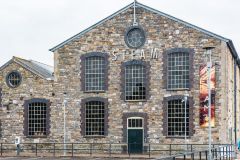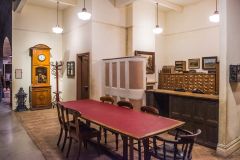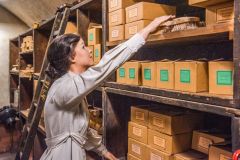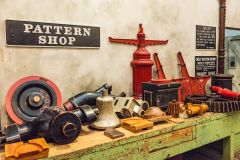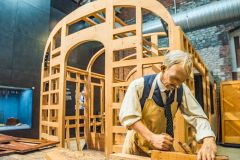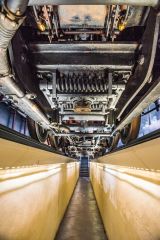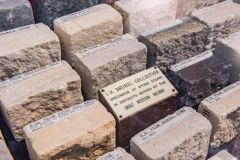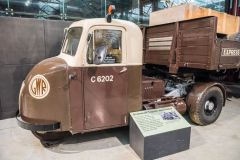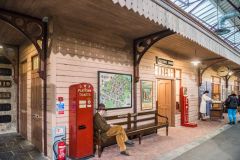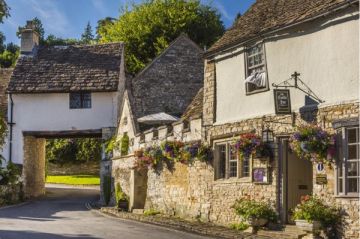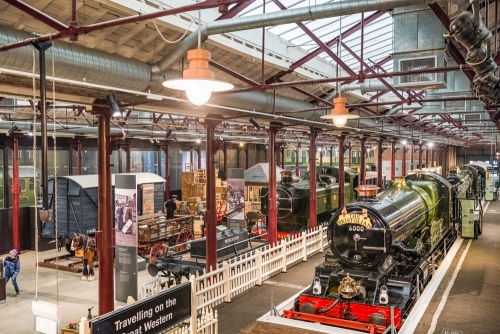
STEAM is heaven for the railway enthusiast; a journey through the age of steam and the rich history of the Great Western Railway. Located in a historic 19th-century works building used by the GWR, the museum boasts famous locomotives, recreated railway scenes, and a wealth of railway memorabilia.
History
Swindon is known as Wiltshire's 'Railway Town' for its long heritage as a railway hub. During its heyday, the Great Western Railway, or GWR as it was commonly known, was one of the largest railway companies in the world, and its main works was at Swindon. The GWR works opened here on 2 January 1843.
The GWR Works transformed Swindon from a quiet country town of some 2,500 people to a bustling railway town almost overnight. A special railway village was built to house workers, complete with terraced houses, medical and educational facilities, a church and a pub. Many of these railway village buildings still exist.
The Works operated from 1843 until 1986, and it was claimed that it could produce 3 locomotives per week.
The STEAM museum occupies part of the restored Grade II listed works building and replaces the GWR museum that stood on Faringdon Road. One of the most interesting parts of the museum is a display covering the heritage of Swindon and its connection to the railway.
There are exhibits on Isambard Kingdom Brunel, the engineering genius behind the GWR, including personal items used by Brunel. Look for a collection of stones collected by Brunel from every part of the railway line. Brunel used these stones to determine how best to engineer the line for local geological conditions.
Collection Highlights
The museum begins with the original GWR offices and storerooms, then moves to the foundry and pattern shop, where metal objects used in trail construction were designed, cast, and finished. Then there is the Carriage Shop, showing how a rail carriage was framed by skilled woodworkers.
Beyond the Carriage Shop is the Machine Shop, showcasing belt-driven machines used on site. Then there is the Boiler Shop, where you can see a locomotive in the process of restoration.
Locomotive 4248
The locomotive, in this case, is #4248, which was built at the Swindon works in 1916. It worked hauling coal trains around southern Wales until 1963 before being rescued from the Barry Scrapyards in 1986.
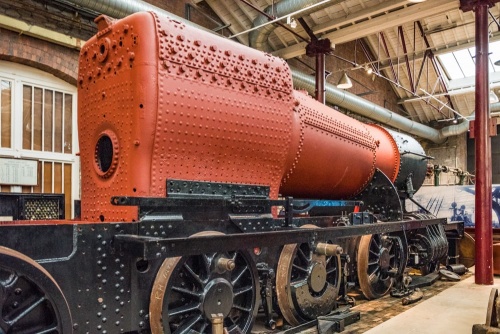
Caerphilly Castle
Otherwise known as Locomotive 4073, the Caerphilly Castle was built in 1923 and was the first Castle Class locomotive to enter service. This class was the most powerful passenger-class locomotives in Britain. One hundred and twenty-three Castle Class locomotives were built at Swindon from 1923-1950.
In 1924-5 the Caerphilly Castle was exhibited at the British Empire Exhibition at Wembley beside another famous locomotive, The Flying Scotsman.
Castle Class locomotives were used on the route between London Paddington and Cheltenham Spa. The Cheltenham Spa Express became the world's fastest train in 1929 when it reached an average speed of 66.2mph on the journey. The Cheltenham Flyer broke its own record by averaging 81.6mph in 1932.
Visitors can walk down a ramped tunnel that passes directly under the Caerphilly Castle, allowing you to look up at the undercarriage and see the drive wheels up close.
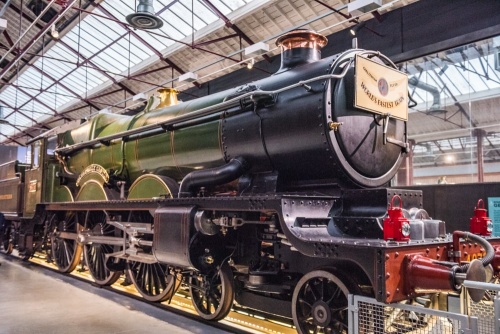
The North Star
This historical engine is a replica of the original which was constructed at the Swindon works in 1925, using some original parts. The North Star was built by Robert Stephenson for Isambard Kingdom Brunel and hauled the first passenger train on the Great Western Railway in 1838. It reached a top speed of 36mph when hauling 200 passengers.
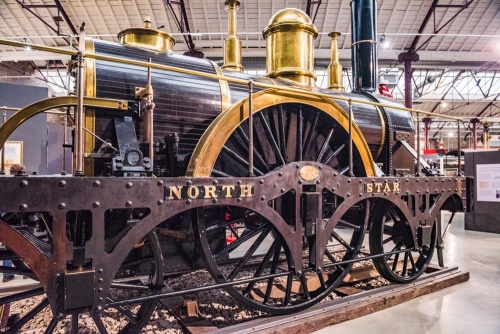
Dean Goods (Locomotive 2516)
The Dean Good class locomotives were designed by William Dean, the Chief Locomotive Engineer at GWR Swindon from 1877-1902. These locomotives were perfect for hauling goods as they were lightweight, sturdy, and reliable.
The army took 62 Dean Goods locomotives to France and Greece for WWI operations, and they were still so popular by the time WWII rolled around that the military requisitioned 108 more, including some that had already seen action in WWI. Many of these were destroyed on the retreat to Dunkirk, but others were captured and reused by the Germans on French railways
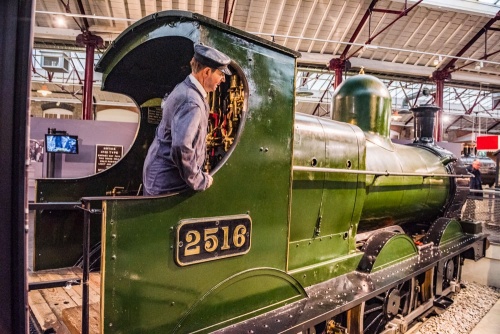
Brake Van
From 1852 every GWR goods train was required to have a separate brake van with a mechanical handbrake controlled by hand. This van was made at Swindon in 1946 and was still being used in the 1960s.
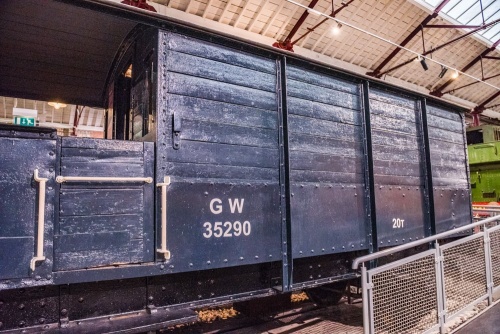
North Somerset Signal Box
You can try your hand at moving track points inside this functioning signal box, complete with a step-by-step interactive video showing how the signalling mechanism works.
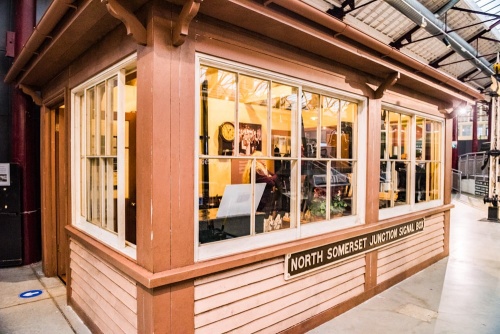
Shunters Truck
This flatbed style truck is unique to the GWR and allowed shunting personnel to arrange wagons in the correct order to leave the goods yard. The wheels were covered for safety, to avoid clothing catching in the wheels.
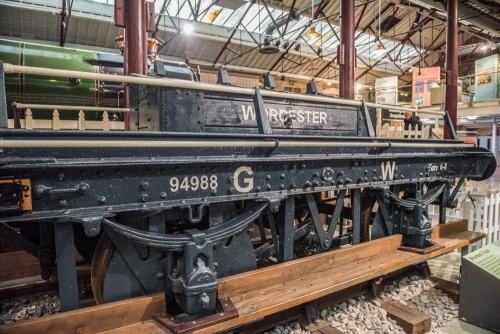
Hawksworth Pannier Tank
This unusual locomotive gained its nickname because the water tanks on either side of the boiler resembled old-fashioned pannier baskets carried by horses. This locomotive was built in 1947 and was the first Hawksworth Pannier Tank to be constructed for GWR at Swindon.
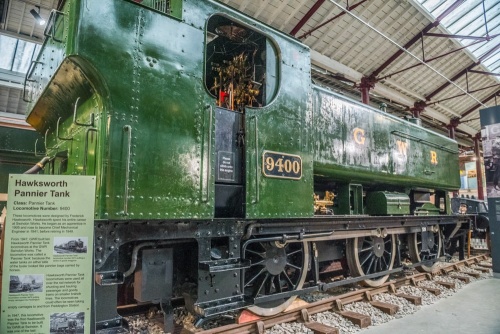
Scammell Tractor and Trailer
A flatbed lorry used for often deliveries. Until the 1930s this role was filled by horse-drawn vehicles.
King George V (King Class, #6000)
The King George V was the first King Class locomotive, built at Swindon in 1927. It was designed to be the most powerful express passenger locomotive in Britain. They were far heavier than previous engines and many bridges had to be strengthened to allow them to pass. By the time this engine was retired in 1962, it had travelled over 2 million miles.
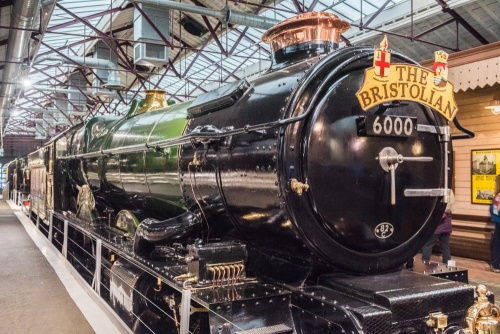
The Royal Carriage
Built especially at GWR Swindon for Queen Victoria's 1987 Diamond Jubilee Train. The carriage retired from service in 1930.
Other exhibits include a buffet carriage, a Victorian station and waiting room, a display on how the GWR publicised the south-west of England as a holiday destination, and an exhibit on how the GWR was forced to convert its tracks to standard gauge. There is a moving display of commemoration plaques and memorials to GWR workers who lost their lives in the two world wars.
Railway enthusiasts will love the collection of historic engines, carriages, and rail equipment. Even if you can't tell your broad gauge locomotive from your rolling stock, you'll still enjoy the sense of nostalgia created by a series of scenic recreations that bring to life the age of steam. Tableaux show a workman hand-crafting a railway carriage, workers loading a ballast wagon, and passengers sitting patiently on a Victorian platform.
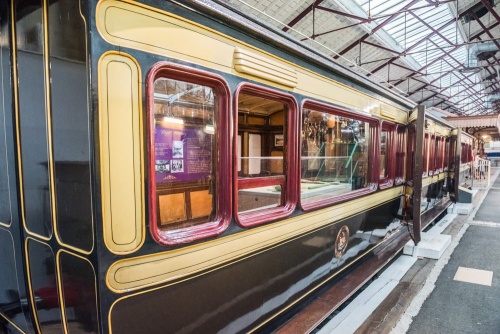
The museum holds a vast archive of railway photos, documents, audio recordings, plans, drawings, and magazines related to the GWR. See reconstructed offices, a signal box, a foundry, stores, and workshops. There are interactive displays and hands-on experiences that bring the GWR's heritage to life, and volunteer stewards are on hand to answer questions.
The museum houses a collection of historic locomotives and carriages, some forming part of the National Collection organised by the National Railway Museum.
Getting There
STEAM is directly beside the popular Swindon Designer Outlet shopping centre and is well signposted from all major roads. If you arrive by car, park in the designer outlet car park. Get your entry ticket validated at the welcome kiosk inside the shopping centre and parking is free. Directly across from the STEAM museum is Heelis, the National Trust's headquarters building.
About Steam - Museum of the Great Western Railway
Address: Firefly Avenue,
Swindon,
Wiltshire,
England, SN2 2EY
Attraction Type: Museum
Location: On the B4289
Website: Steam - Museum of the Great Western Railway
Email: steammuseum@swindon.gov.uk
Location
map
OS: SU143 850
Photo Credit: David Ross and Britain Express
HERITAGE
 We've 'tagged' this attraction information to help you find related historic attractions and learn more about major time periods mentioned.
We've 'tagged' this attraction information to help you find related historic attractions and learn more about major time periods mentioned.
Historic Time Periods:
Find other attractions tagged with:
19th century (Time Period) - castle (Architecture) - George V (Person) - Queen Victoria (Person) - Restoration (Historical Reference) - Robert Stephenson (Person) - Victorian (Time Period) -
NEARBY HISTORIC ATTRACTIONS
Heritage Rated from 1- 5 (low to exceptional) on historic interest
Lydiard House & Park - 2.3 miles (Historic House) ![]()
Lydiard Tregoze, St Mary's Church - 2.4 miles (Historic Church) ![]()
The Coombes - 5.4 miles (Countryside) ![]()
Hinton Parva, St Swithun's Church - 5.6 miles (Historic Church) ![]()
Highworth, St Michael's Church - 5.9 miles (Historic Church) ![]()
Cricklade, St Sampson's Church - 6 miles (Historic Church) ![]()
Shrivenham, St Andrew's Church - 6.6 miles (Historic Church) ![]()
Leigh, All Saints Church - 6.8 miles (Historic Church) ![]()
Nearest Holiday Cottages to Steam - Museum of the Great Western Railway:
Wootton Bassett, Wiltshire
Sleeps: 4
Stay from: £365 - 1293
More self catering near Steam - Museum of the Great Western Railway
